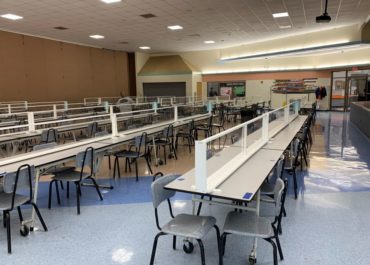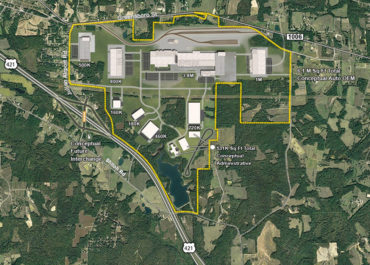Continuity of Operations Planning & Design
No question, a pandemic applies extraordinary and unrelenting stress on organizations, operations, and the health and safety of individuals. Implementing proactive defense against the biological threats and challenges of COVID-19 includes simultaneously:
Designing and implementing layers of protection for employees and essential business functions
Developing and maintaining an effective Continuity of Operations Plan (COOP)
LJB develops, designs and implements flexible solutions that enable your organization to remain resilient throughout the ever-changing pandemic conditions, enabling you to focus on achieving business objectives.
We can help you:
Create a Customized Continuity of Operations Plan (COOP)
- Develop procedures to restart, resume and sustain operations.
- Identify all critical functions, relationships and resources.
- Identify essential employee health and safety controls.
- Perform gap analysis of existing plans/procedures.
- Establish communication protocols.
Design and Implement Controls
- Maximize engineering and administrative controls that do not rely on personal protective equipment (PPE). Such controls include:
- Barriers
- Air flow
- Communication & training
- Alternate work practices
- Visitor interface protocols
- Screening programs
- Develop the critical administrative controls and training for situations when PPE is unavoidable.

LJB Services
CONTACT US
For a free consultation, contact us at (937) 259-6358 or COOPsolutions@ljbinc.com.
Why LJB?
Pandemic Planning Expertise
Our team is led by industrial hygiene and preventive health experts who created and implemented pandemic preparedness plans, protocols, and controls while serving in the U.S. military.
Practical Experience in Diverse Industries
Our unique team has practical experience implementing controls — including complete engineering design and turnkey design-and-build solutions — in a range of industries, such as maintenance, healthcare, production, infrastructure and hospitality.
Flexible Solutions
Our expertise enables us to create solutions that are resilient throughout the waxing and waning fluctuations of the pandemic life cycle, helping you navigate the critical failure points.
Save Time and Resources
By tapping our expertise, you will save valuable time and resources, while avoiding the high-stakes consequences of reactive or trial-and-error approaches.
Put our pandemic planning experts to work for you and your business.

Dawn Colombi, PMP
Occupational Environmental and Health Services Leader / Safety Director
- Led State-Level Responses to Pandemic Planning and Policy Development
- Managed Air National Guard Occupational and Environmental Health Programs
- Execution responsibilities included 93 installations in 54 states and territories
- 32 years with U.S. Air Force and Air National Guard
- At OSHA, trained Compliance Safety and Health Officers
FAQs
Can I just ride this out and resume normal operations in a few weeks?
The first wave in the U.S. may be over in a month; however, all historical pandemics have multiple waves. Until the entire population either has the disease or gets vaccinated against it, these waves will continue. The best estimates for when “normal” will return is currently the end of 2021. Businesses that adapt to this new environment will succeed. Those that do not will face significant operational challenges.
My business has already experienced financial stress from this pandemic. How do I evaluate the costs and benefits for designing controls and developing a Continuity of Operations Plan?
The answer is binary. Organizations are either proactive or reactive. Relying on reactive measures when dealing with a biological infectious disease is likely to result in uncontrolled events that have already crippled businesses of all sizes. Proactively implementing a COOP and controls position an organization to anticipate the changes and challenges and to navigate the road ahead. By being proactive and investing in controls, businesses minimize interruptions, accelerate and sustain recovery, explore new market opportunities, and cultivate the support and confidence of employees and business stakeholders.
Is a physical barrier between people at my business enough to prevent the spread of COVID-19?
A properly implemented barrier is beneficial, but a poorly designed barrier can be worse than no barrier at all. Unintended changes to air flow and worker reactions to the barrier are the primary culprits. Based on our experience and knowledge, designing purposeful layers of protection throughout a place of business can achieve successful prevention. Since transmission may occur through both inhalation and contact, an approach that uses administrative controls, as well as engineering controls such as installing physical barriers and controlling airflow, is more reliable.
Can I just start by installing barriers?
An improperly implemented barrier can do more harm than good. A barrier may redirect airflow, making it easier for the virus to be transmitted through inhalation. A barrier may also give a false sense of security. It may be too small or placed in a location that only gives the appearance of protection while doing little to prevent the spread of the virus. Some materials are incompatible with common disinfectants and may become cloudy. If the cloudy barriers become a hindrance to getting work done, they will likely be circumvented, or they will need to be replaced, which would result in additional business costs and disruption.
We installed barriers to show our employees and customers that we’re taking steps to prevent the spread of COVID-19. Are there any concerns with this approach?
An improperly implemented barrier that doesn’t prevent the spread of the virus could lead to more infections and questions from employees about whether the proper steps were taken to protect them. Since there is so much conflicting information about COVID-19, employee training is a crucial element in controlling the spread in the workplace. Even with respect to physical barriers, training on topics, such as what disinfectants are compatible, personnel positions required for maximum protection, and the protection limitations of the barrier are all essential training topics. Employees need to understand that they play a role in ensuring protection is adequate.


